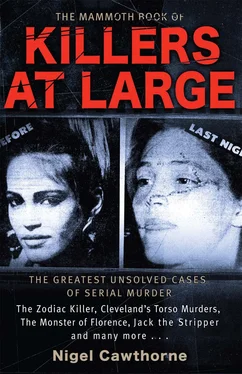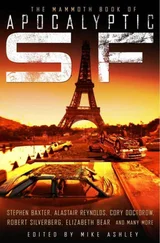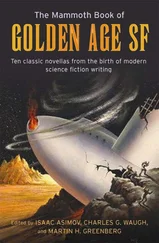Cowles also discovered that the veteran’s hospital shared some of its facilities with the Ohio Penitentiary Honor Farm. In the farm, he met a convicted burglar named Alex Archaki, who had arranged a reciprocal deal with Dr Sweeney. Archaki supplied Dr Sweeney with liquor, while Dr Sweeney wrote Archaki prescriptions for barbiturates and other drugs.
What’s more, Archaki believed that Sweeney was the Mad Butcher and he told a strange tale. The two had met a few years earlier in a bar in downtown Cleveland. Archaki had been sitting alone when Sweeney came up to him. He bought Archaki drinks and asked a lot of personal questions. Where was he from? Was he married? Did he have any family in the city? At the time, he thought that such a detailed cross-questioning was peculiar. Later, he realized that Sweeney was sizing him up as a victim. This made sense to Cowles as the Mad Butcher would made sure that most of his victims remained unidentified by picking men and women who had no close friends or relatives in the area. Archaki also told Cowles that every time Sweeney got back from one of unexplained absences from the hospital, a new body turned up in Kingsbury Run.
When Cowles returned to Cleveland, he renewed the investigation of Dr Sweeney, discreetly. He discovered that Francis Edward Sweeney had been born in 1894 into a poor Irish immigrant family who lived on the edge of Kingsbury Run. His father had been crippled in an accident and, when Frank was just nine, his mother had died of a stroke, leaving him and his brothers and sisters in dire poverty. Nevertheless, Frank was intelligent and determined to make a success of himself. He graduated from high school and worked his way through medical school in St Louis while holding down a full-time job. His fellow students elected him vice president of his sophomore class and his professors commended him both in science and medicine.
In July 1927 he married a beautiful dark-haired young woman who produced two healthy sons. In 1928 he graduated from medical school and took a surgical post at St Alexis hospital near Kingsbury Run. While remaining the consummate professional, he was a deeply compassionate man who loved his family and would take time off to attend to his siblings and their children if they were sick. At St Alexis, he rose quickly through the ranks and seemed destined for great things. But then, in 1929, he began drinking heavily. There might have been a genetic cause for this.
Sweeney’s father had been an alcoholic who had spent the last years of his life in mental hospital, after being diagnosed as suffering from “psychosis”.
There might also have been a physical cause. Sweeney had been injured in the head in World War I so badly that he was awarded a disability pension, though he may merely have succumbed to pressure after years of overwork. He was admitted to City Hospital for alcoholism, but his condition seemed resistant to treatment. Drunk all the time, his health deteriorated, along with his career and his marriage. Impossible to work with, he was sacked by the hospital. At home he was abusive and violent. His wife left in September 1934 and, when she filed for divorce and sought custody of the kids two years later, she requested a restraining order preventing him “visiting, interfering, or molesting her”. The break-up of the marriage coincided with the beginnings of the Torso Murders.
Certainly Dr Sweeney would have the knowledge and ability to expertly decapitate and dismember the victims. He was also strong enough and large enough to carry Edward Andrassy and his unidentified companion down Jackass Hill in Kingsbury Run. And his alleged bisexuality could possibly explain why the victims were both male and female.
Cowles was just putting the finishing touches to his case when, on 8 April 1938, a young labourer on his way to work saw what he at first thought was a dead fish in the Cuyahoga River. On closer inspection he saw that it was the lower half of a women’s leg. Eliot Ness was reluctant to believe that this was Victim Ten, hoping that it might be a piece of hospital waste like the leg in Sandusky, a limb lost as the result of a boating accident or another piece of an earlier victim not recovered at the time. Then Gerber announced that the woman’s lower leg was just a few days old. Ness insisted that Gerber hand over the leg for independent evaluation of the time of death. Gerber refused, saying that the voters had elected him as coroner to determine the time of death, not the director of public safety who had so conspicuously failed to catch the Mad Butcher.
A month later Gerber was vindicated when the police pulled two burlap bags out of the Cuyahoga River that contained the nude torso of a woman that had been cut in half, along with the rest of her legs. The dead woman was between 25 and 30 years old, around 5 feet 3 inches tall, and weighed about 120 pounds. She was flat-chested and her hair was light brown. She had once had given birth by caesarean section and had suffered an injury to her cervix by an abortion or another birth. She had also had her appendix removed. The head was missing and she had probably died from decapitation.
For the first time Coroner Gerber detected drugs in the system, but it was impossible to tell whether the drugs had been used to immobilize the victim or she was an addict. The arms might have rendered a vital clue but they were never found. With no hands there were no fingerprints and the young woman was never identified.
This threw the investigation back on Cowles’ new suspect, Dr Sweeney. But the police had to proceed cautiously. If they went after Dr Sweeney directly, they risked Congressman Sweeney launching a new attack on the Burton administration, claiming that Ness was vindictively trying to frame one of his family.
Cowles tried to put Dr Sweeney under surveillance, but Sweeney soon spotted he was being followed. Once he even introduced himself to his tail, before giving him the slip. But while Sweeney was out, the police searched his lodgings and his office. They even opened his mail, but unearthed no evidence linking the doctor to the murders.
Despite all the attention being paid to Dr Sweeney, the activities of the Mad Butcher did not stop. On 16 August 1938, three scrap-metal collectors were foraging in a rubbish dump at East Ninth Street and Lakeside—a location overlooked by Eliot Ness’s office when they found the torso of a woman wrapped in a man’s double-breasted blue blazer and an old quilt. Nearby the legs and arms were discovered in a makeshift cardboard box, wrapped in brown paper and secured with rubber bands. The head had been wrapped up in the same way and, uncharacteristically, the hands were also present.
As the police continued searching the area, an onlooker spotted some bones nearby. Detective Sergeant James Hogan picked up a large tin can nearby to put the bones in, but when he looked inside he saw a skull grimacing back. More skeletal remains were found, some wrapped in brown paper.
Gerber estimated that the woman had been a Caucasian in her thirties, approximately 5 feet 4 inches tall, and weighing around 120–125 pounds. She had been dismembered, like the others, with a large, sharp knife. The body was so badly decomposed it was impossible to determine the cause of death. However, some parts of her body were remarkably well preserved and Gerber said they looked as if they had been refrigerated. He estimated that she had died sometime between the middle of February and the middle of April, possibly before the first week of April when the tenth victim had been killed. However, he thought that her remains had only been on the dump for a few weeks. Her left thumb was one of those parts still left intact and they were able to lift a fingerprint. But it did not match any on file.
The skeletal remains found nearby belonged to a white man who was also in his thirties. He was around 5 feet 7 inches and weighed around 135 to 150 pounds. His dark-brown hair was long and coarse. His corpse had also been dismembered with a long, sharp knife. But, again, the cause of death could not be determined.
Читать дальше











